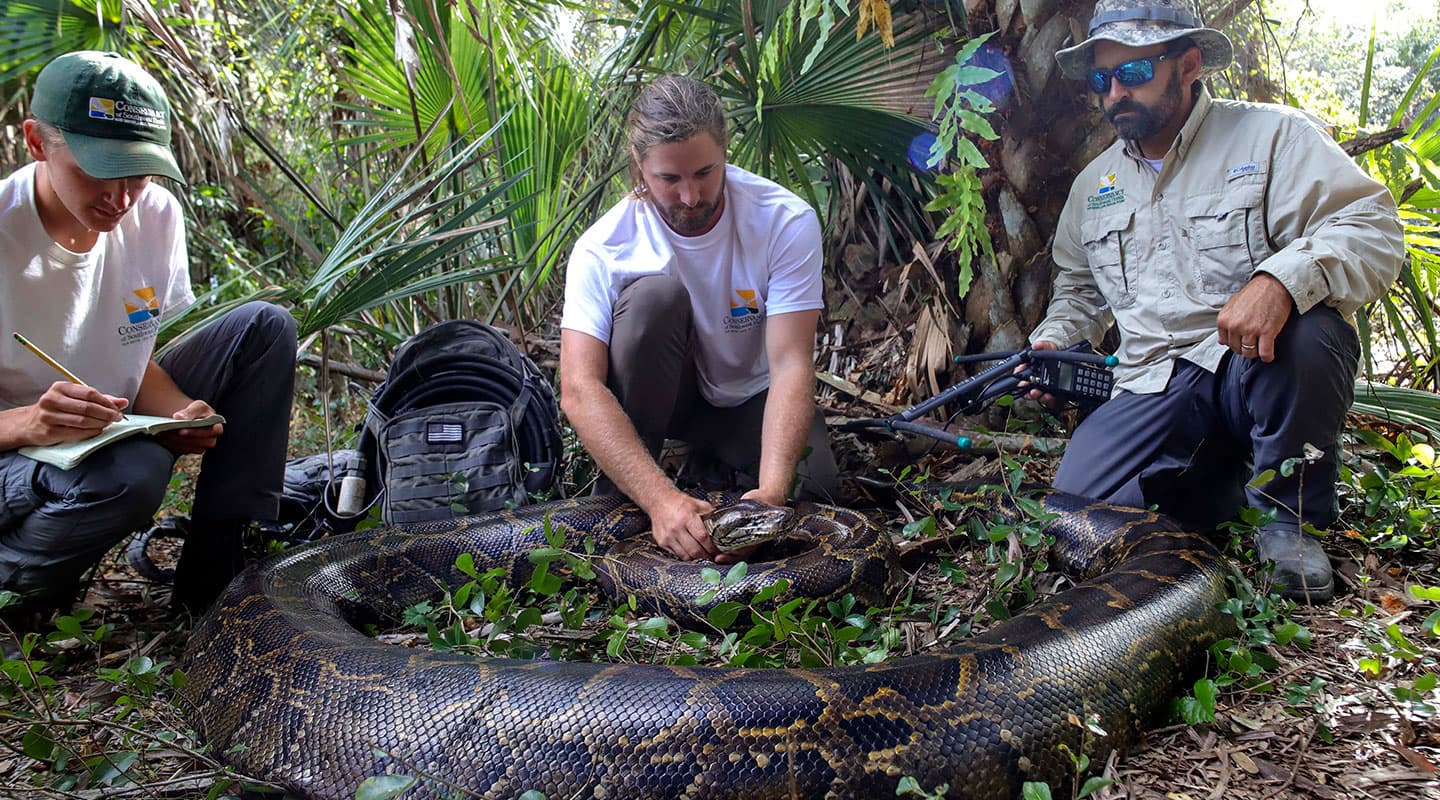Scientists had been tracking the male Burmese python for months. The huge snake, nicknamed Dion, slithered through the tall, thick grass of a forest near Everglades National Park in Florida. Experts hoped Dion would lead them to other pythons they could capture.
Last December, Dion was spending a lot of time in a remote part of the forest. Wildlife biologist Ian Bartoszek and his team from the Conservancy of Southwest Florida wanted to find out why.
They used long knives called machetes to cut their way through tangled vines and thick brush. When they finally found Dion, they spotted a massive female python lurking in the bushes nearby!
As the three researchers tried to catch the snake, she whipped her thick tail and tried to escape. After about 15 minutes of wrestling, she finally tired out. Next came the hardest part: carrying the 18-foot-long python to their truck.
Back at their lab, the researchers put the giant snake on a scale and found that she weighed a whopping 215 pounds! The reptile is the largest Burmese python ever caught in Florida.
But the snake’s record-setting size isn’t cause for celebration. For decades, Burmese pythons have been a threat to the Everglades ecosystem. That’s because these snakes are an invasive species—an animal or a plant that is introduced to an area and harms native species.
Scientists had been tracking the male Burmese python for months. The huge snake slithered through the tall, thick grass of a forest near Everglades National Park in Florida. His nickname is Dion. Experts hoped Dion would lead them to other pythons they could capture.
Last December, Dion was spending a lot of time in a remote part of the forest. Ian Bartoszek is a wildlife biologist from the Conservancy of Southwest Florida. He and his team wanted to find out why Dion was there.
They had long knives called machetes. They used them to cut through tangled vines and thick brush.
They finally found Dion. But they also spotted a massive female python lurking in the bushes nearby!
The three researchers tried to catch the big snake. She whipped her thick tail and tried to escape. After about 15 minutes of wrestling, she finally tired out. Next came the hardest part. The team had to carry the 18-foot-long python to their truck.
Back at their lab, the researchers put the giant snake on a scale. They found that she weighed a whopping 215 pounds! The reptile is the largest Burmese python ever caught in Florida.
But the snake’s record-setting size isn’t cause for celebration. For decades, Burmese pythons have been a threat to the Everglades ecosystem. These snakes are an invasive species. That’s an animal or a plant that is introduced to an area and harms native species.

